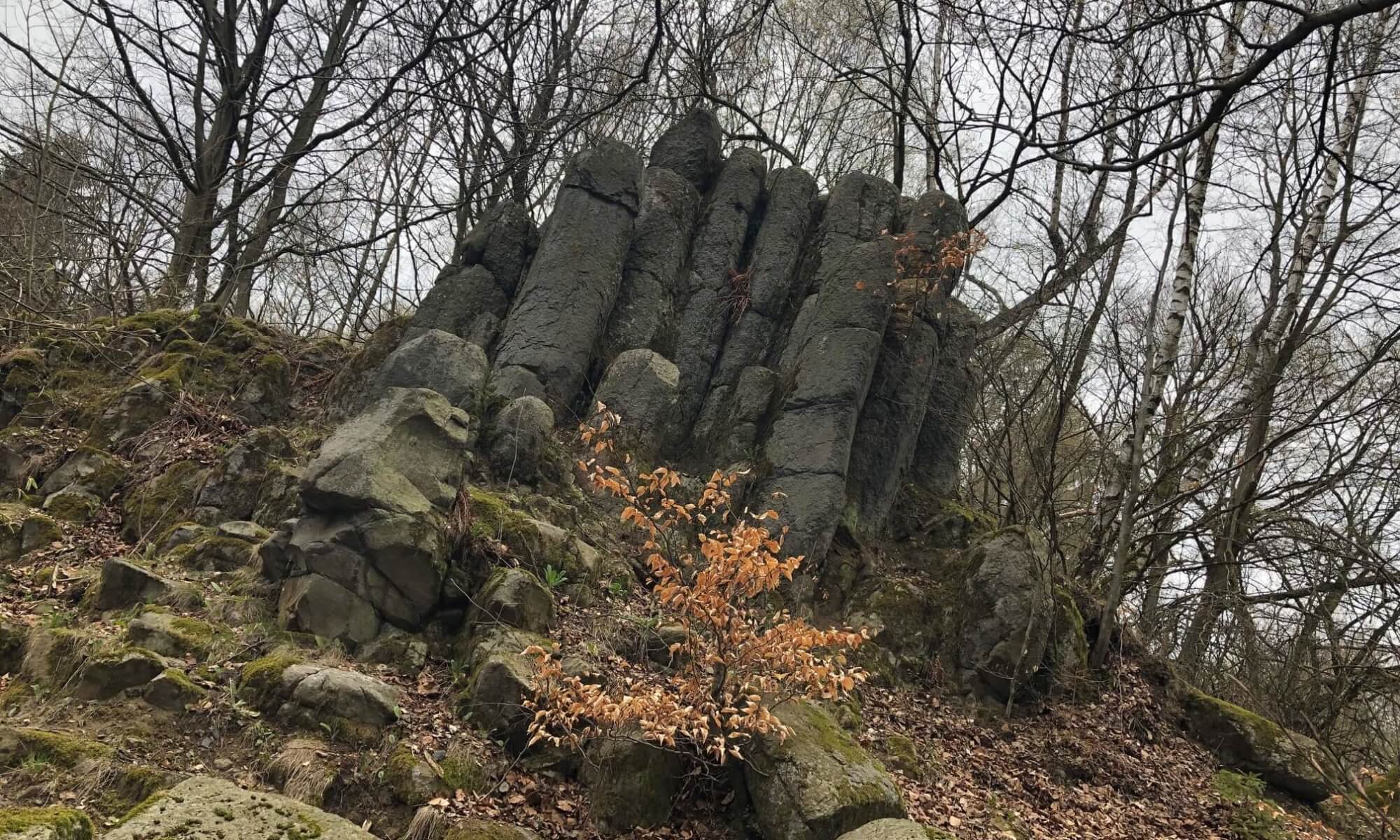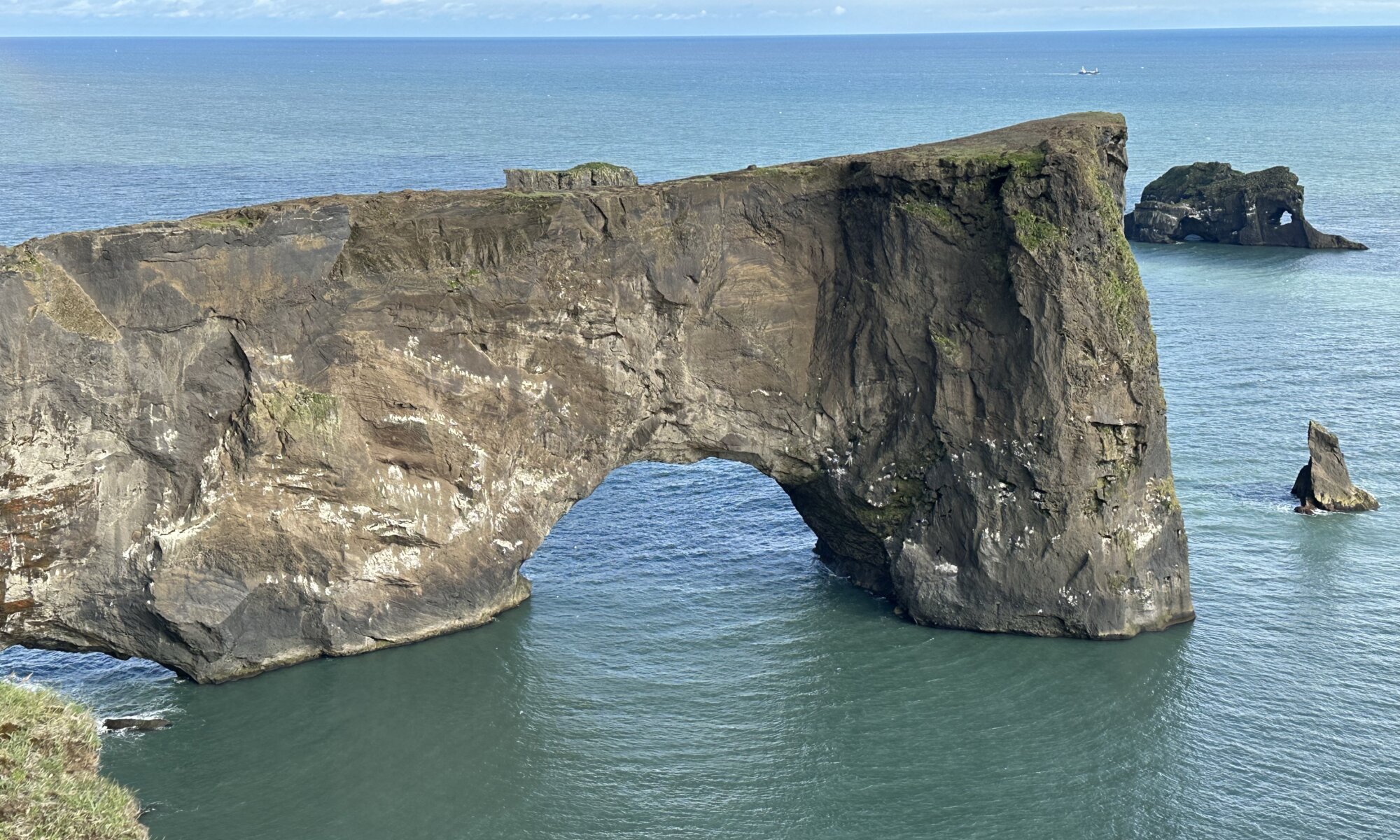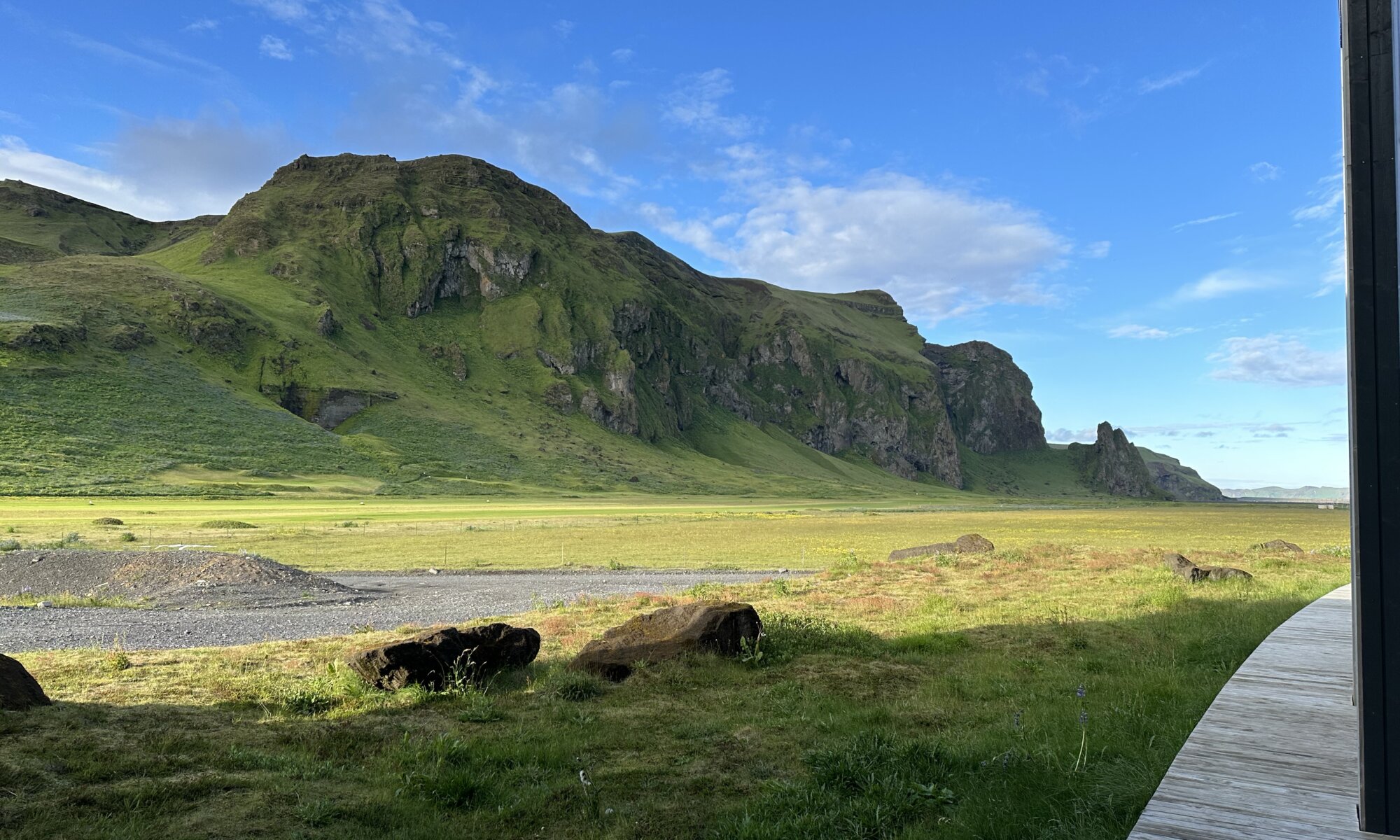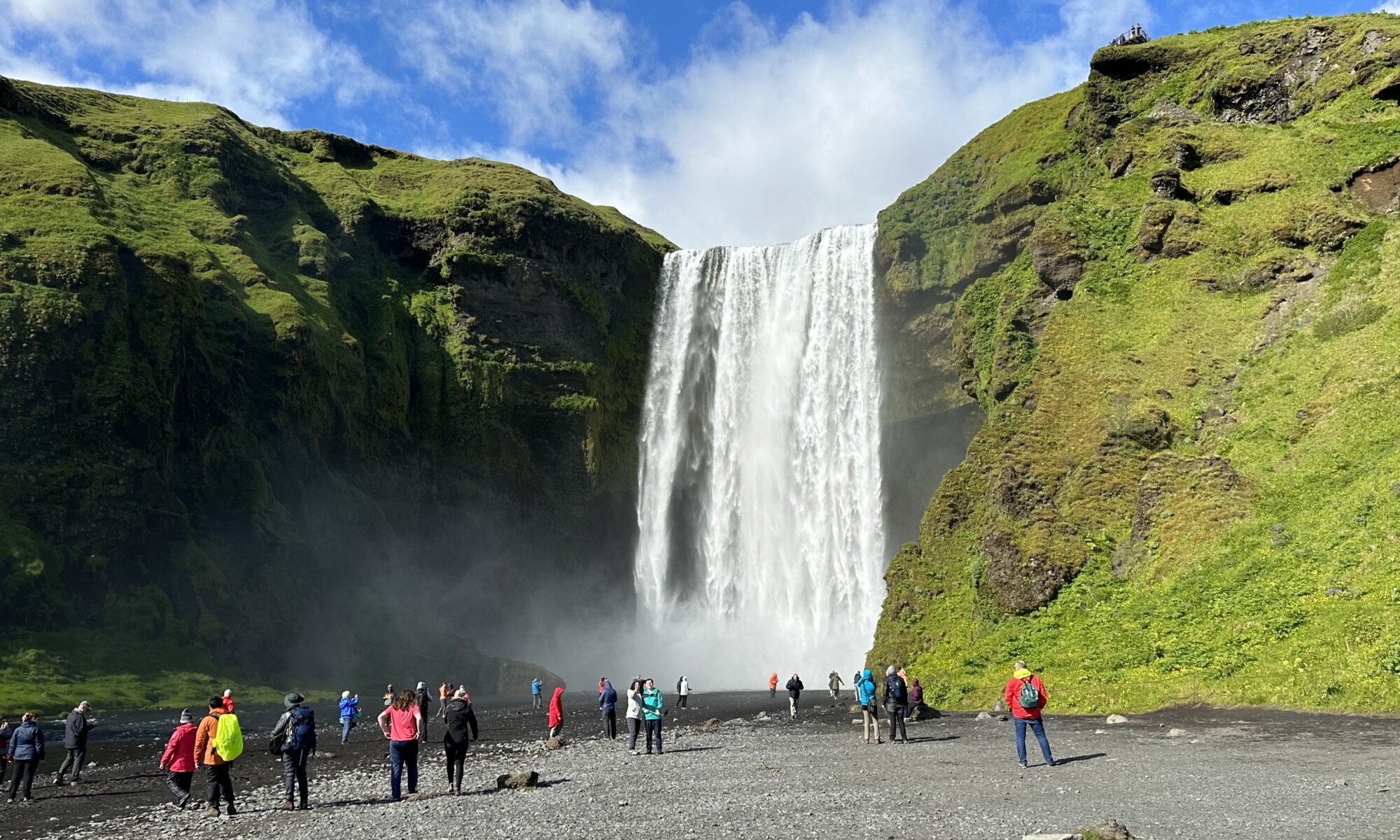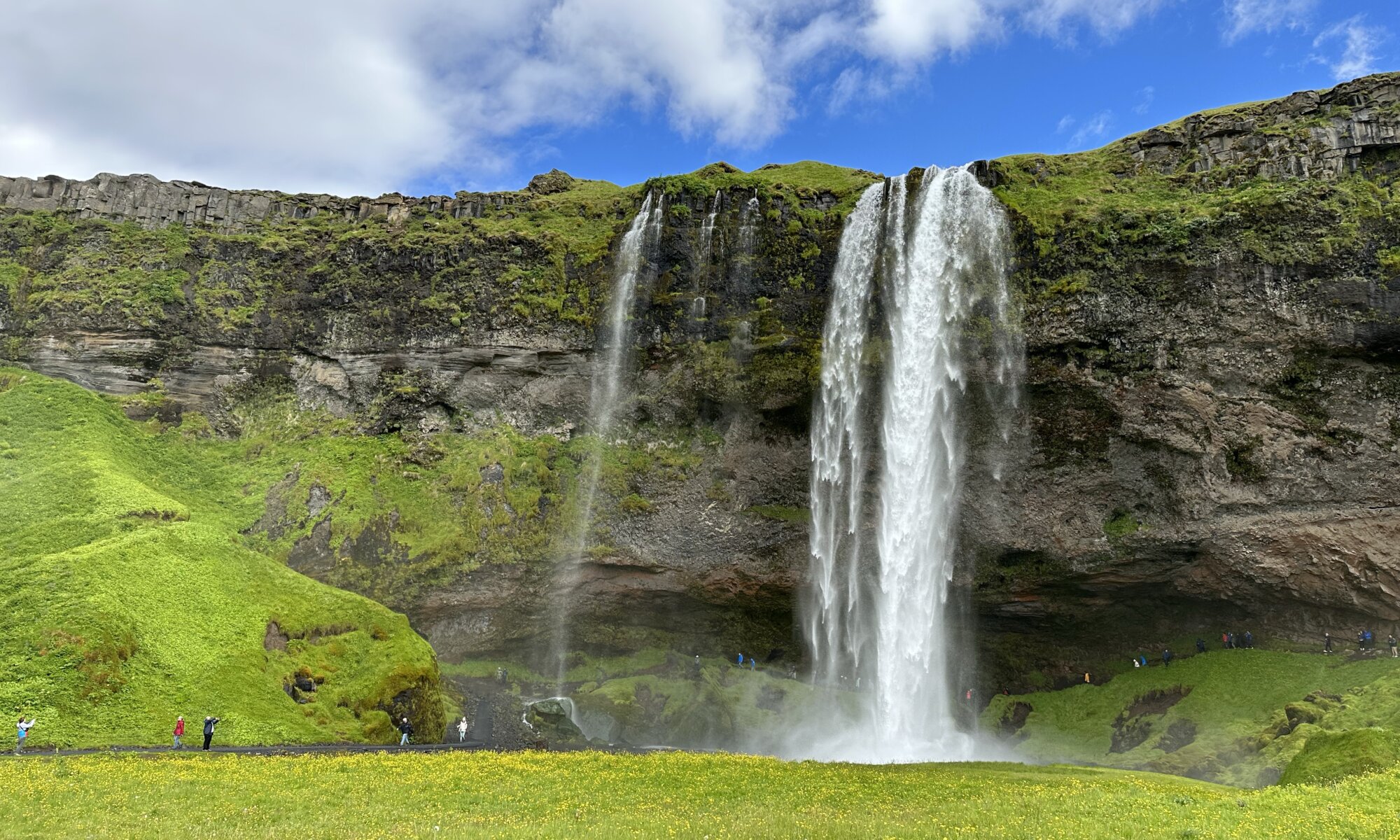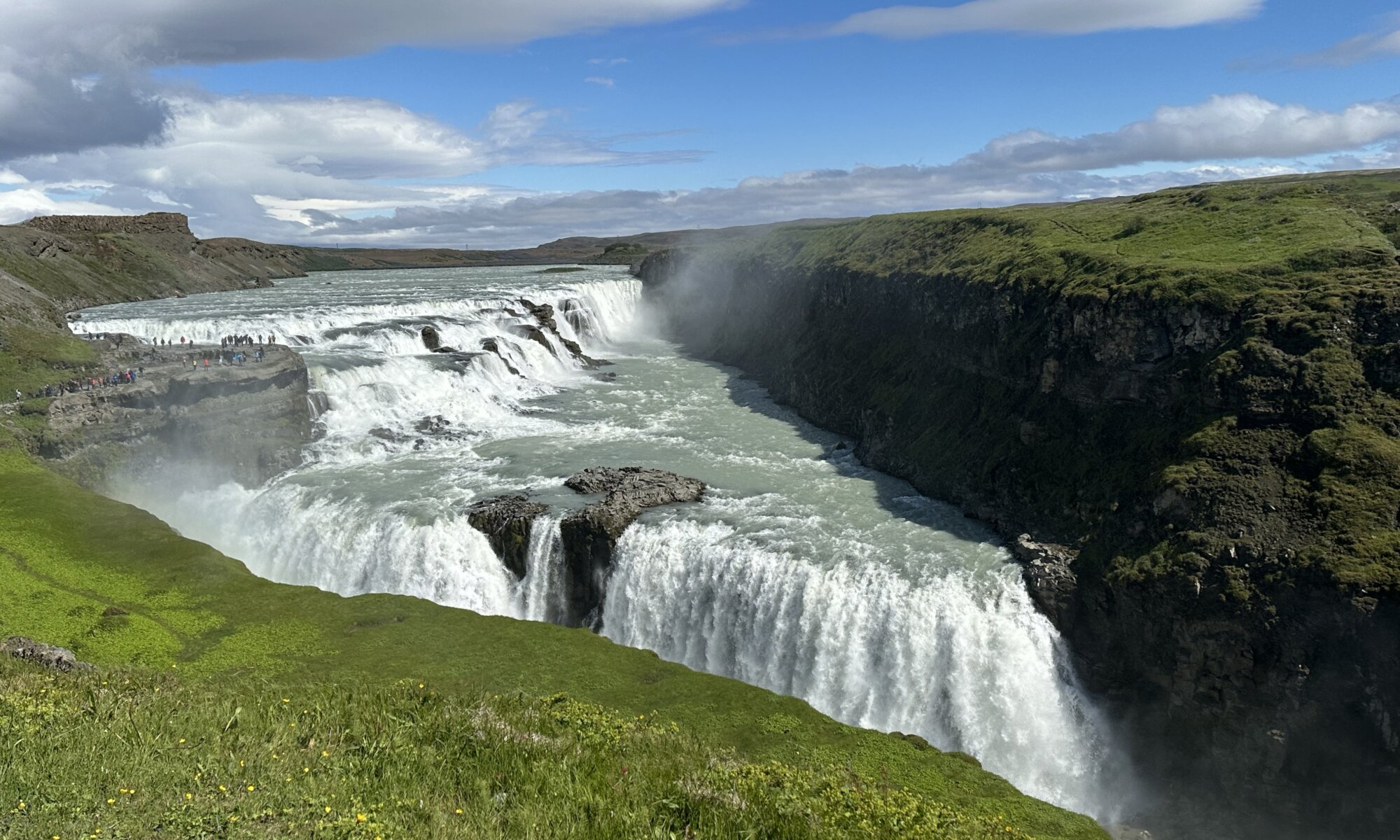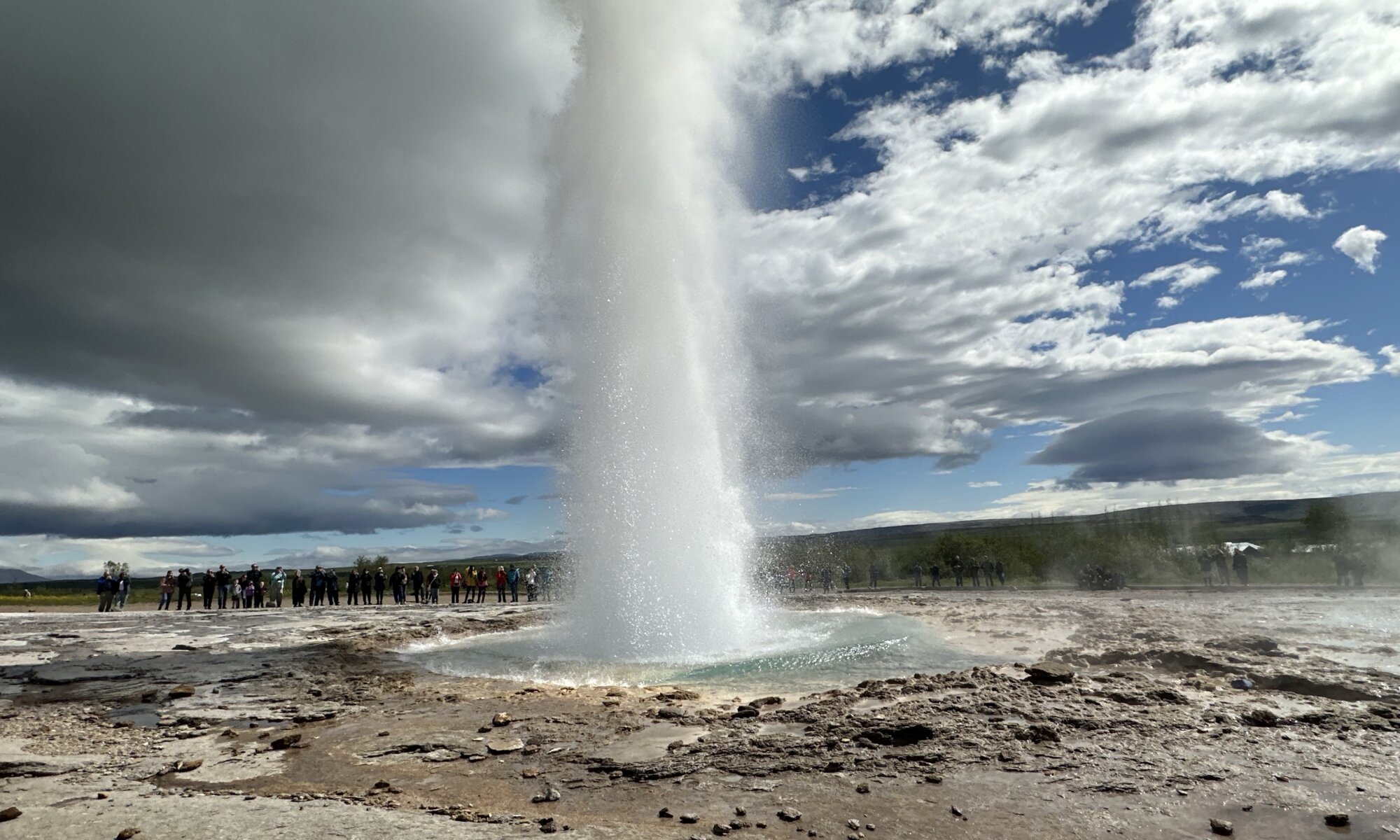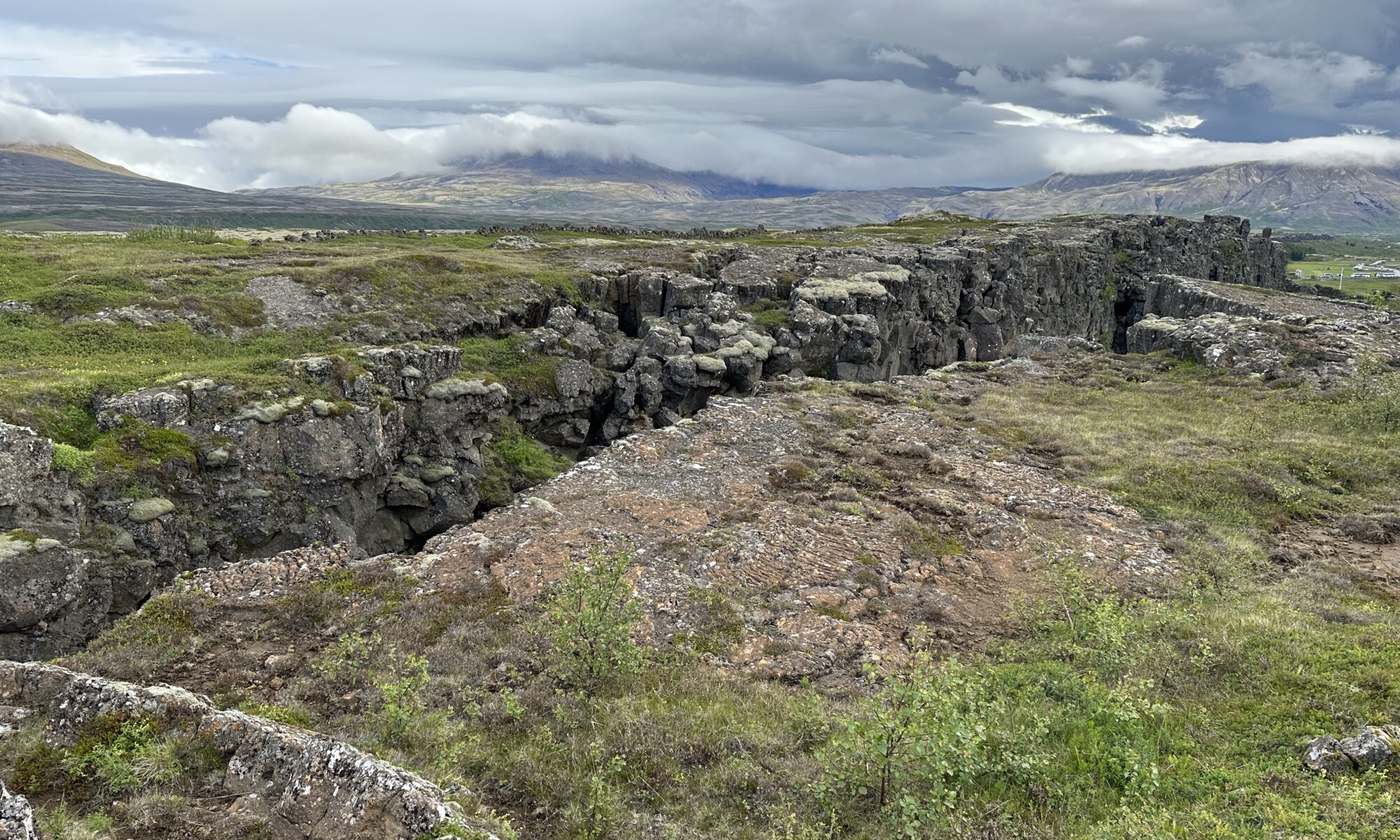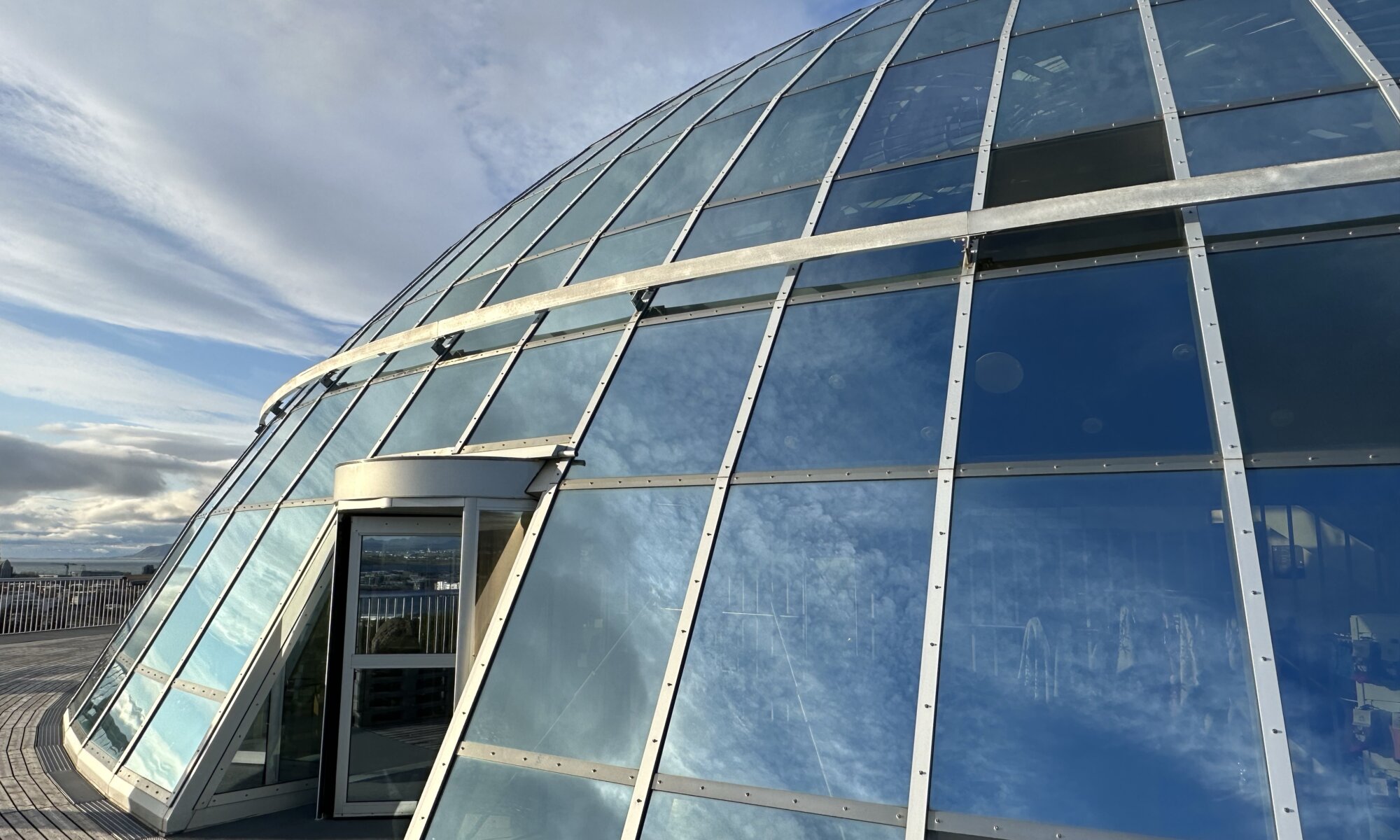The area around Vík í Mýrdal has a nice specialty: beaches with sand black as the night. I mean the real night, not the three hours of slight ‘darkness’ Iceland experiences these days every night. On some days you might go swimming there, but it creates a wonderful atmosphere all year round. From the Black Beach at Vík í Mýrdal you can have a good look at the Reynisfjall rock structures, but you also should take the trip up the hill to the Dyrhólaey viewpoint.
Continue reading “Black beach”Hótel Kría
The Kría is a classy hotel at Vík í Mýrdal a perfectly suited for people travelling by car. From the restaurant and breakfast room you can enjoy views on the mountains, on the other side of the building the black beach is waiting for you. It would also be a good opportunity to play golf as a golf club is also directly next to it.
Continue reading “Hótel Kría”Skógafoss
At Skógar you can discover another magnificent Icelandic waterfall, the Skógafoss. Between green rocks it falls over a cliff and you can take a shower underneath if you want. The waterfall is an excellent starting point for a hike: on the right-hand side of the waterfall steps give you the chance for a step and rather long ascent to the top.
Continue reading “Skógafoss”Seljalandsfoss
Iceland has many beautiful waterfalls, but Seljalandsfoss is one of the best. It is the largest one of a series of three waterfalls underneath the Eyjafjallajökull volcano (remember when it stopped air traffic in 2010 completely?). Seljalandsfoss has a specialty that makes it very entertaining: you can walk behind the waterfall without getting too wet. It is an amazing photo opportunity and if you have sunshine you’ll almost all the time see a colorful rainbow.
Continue reading “Seljalandsfoss”Gullfoss
The golden waterfall (‘Gullfoss‘) is a two-level waterfall northeast of Reykjavík and together with places like Þingvellir part of the so-called Golden Circle of Iceland. The waters of the Hvítá river are running over wide cascades and then falling into a gorge, creating a massive amount of spray. It is an amazing sight you can view from different angles: for sure from the top, but you can also take some steps down to the gorge and hike down a path to the cascades – then you’re directly at the center of action and in-between the two levels.
Continue reading “Gullfoss”Strokkur
Geysers are a wonderful natural phenomenon: water is heating up underground and every now and fountain of hot water is splashing out. Maybe the best place to see this on Iceland is the geyser Strokkur at Selfoss (not to be confused with the waterfall carrying the same name). It is very reliable and shooting out water every five to six minutes; a fountain that is 20 to 30 meters high. That is why there is always a large crowd surrounding the hot spring and waiting for the next eruption.
Continue reading “Strokkur”Þingvellir
Northeast of Reykjavík you can find the Þingvellir national park, an area with wonderful nature and special in different ways. First of all, the Eurasian and the American plate drift apart there and form the Almannagjá (‘all men’) valley. You can hike between the high rocks and the Öxará river runs there, forming the beautiful waterfall Öxarárfoss. But this place was also always important in Icelandic history as the location of its ancient parliament, the Alþingi.
Continue reading “Þingvellir”Capital by the sea
Reykjavík is a special capital city, as it is the most-northern capital of the world. It can be found in the West of Iceland at the shore. Why is that? It was founded by Ingólfur Arnarson (one of the first settlers) in 874 CE in Viking tradition: he threw wooden poles from his ship and waited where they would reach land. Today the city has 140,000 inhabitants and is the largest settlement in Iceland. Its name literally means ‘smoky bay‘ which might refer to hot springs once existing in the area.
Continue reading “Capital by the sea”Perlan
On a hill called Öskjuhlíð south of the city center of Reykjavík you can find Perlan (‘pearl’). It is a wonderful place especially for evening hours with nice views on the region (plus it is open until 10pm). Perlan is a double-usage facility: in first line it is a storage for hot water and the city is supplied from their. In 1991 six water storages made of aluminum and covered by a glas cupola were activated. In 2017 the second usage started in addition: it is now also a natural history museum.
Continue reading “Perlan”íslensk króna
The currency of Iceland is the íslensk króna (ISK). When in 1918 the island became independent from Denmark this currency was introduced. Typical bills circulating are of 10,000, 5,000, 2,000, 1,000 and 500 ISK value. An íslensk króna is divided into 100 Aurar but these coins don’t exist anymore; you might typically receive coins with the value of 50 or 100 ISK during your journey. If you want to withdraw cash you’ll find sufficient options, already at the Keflavíkurflugvöllur. But to be honest: you don’t need them.
Continue reading “íslensk króna”